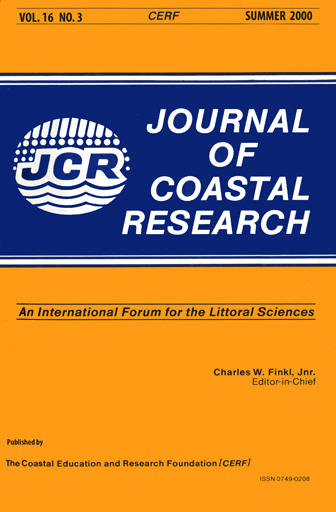Influence of Seasonal Winds on Coastal Carbonate Dunes from the Recent and Plio-Pleistocene at Punta Chivato (Baja California Sur, Mexico)
Keywords:
Krummholz, mollusk beds, rhodoliths, coralline red algaeAbstract
Distribution of calcium-carbonate sand in the lower Gulf of California is regulated by seasonal winds that preferentially transfer materials to dunes from windward beaches. In order to document the strong onshore flow of winter winds, salt-pruned plants (krummholz) were surveyed at 168 locations on the exposed north side of the Punta Chivato promontory in Baja California Sur (Mexico). Growth deformation is characteristic among leatherplant (Jatropha cuneatas and copal (Bursea hindsinia) trees, which are up to 45 years old. Extensive Recent dunes are well developed almost exclusively along the windward north coast of the promontory, where they reach elevations 60 m above sea level. Sediment samples were collected along two transects from beach or subtidal stations across coastal dunes and from one cliff-perched locality on the northeast tip of the promontory. The calcium-carbonate component of the dunes varies between 50-75% by volume, as determined by point counts on thin sections cut from epoxy-cemented samples. The volcaniclastic content varies locally depending on extent of igneous bedrock exposed intertidally. Mollusk-shell fragments account for the dominant share of dune bioclasts, out-numbering particles derived from coralline red algae by ratios between 25:1 and 50:1. Lithified paleodunes of Pleistocene to possible Pliocene age on the north shore also reveal a large calcium-carbonate component in which particles of molluscan origin out-number coralline algae by ratios as high as 27:1. These results contrast with other regional data on Recent and Pleistocene beach sediments in more protected settings, where crushed debris from rhodoliths, or circumrotatory coralline red algae, are the dominant component. The overall biological provenance of calcium carbonate materials appears to be a consequence of different optimum growing areas for mollusk beds as opposed to rhodolith beds.


